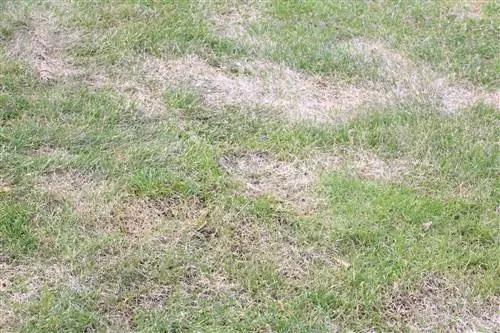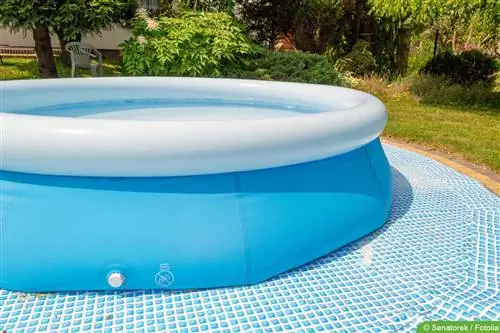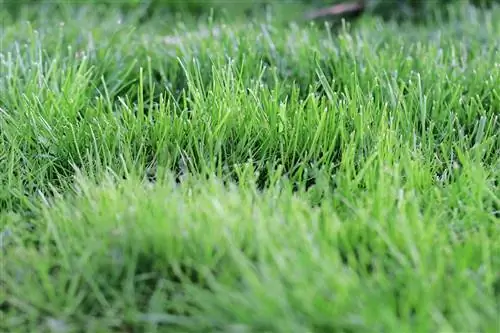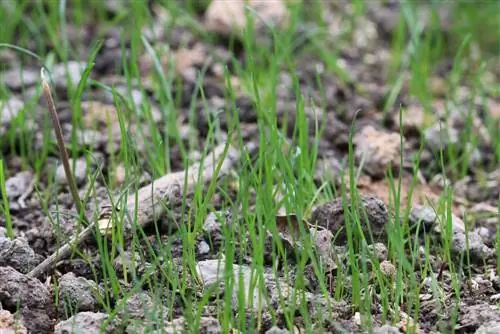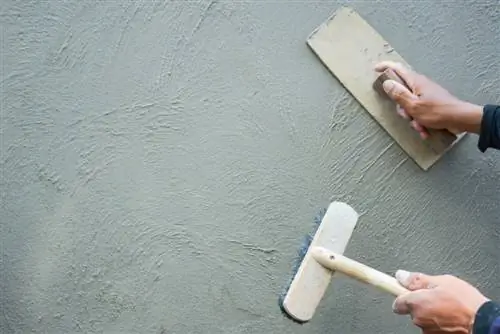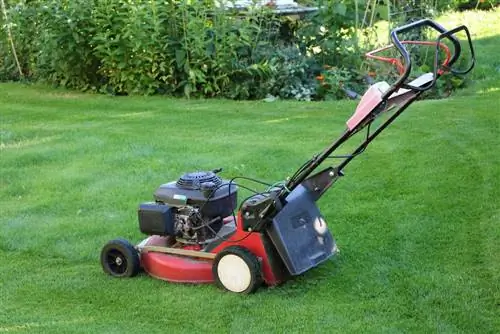- Author admin [email protected].
- Public 2023-12-17 03:39.
- Last modified 2025-01-24 12:45.
Dents and holes in the lawn are unsightly. We'll show you step by step how you can smooth out uneven areas in the lawn.
Leveling the lawn with small bumps
First check your lawn. Are these large bumps or are they just small dents that need to be leveled out?
Roll small unevenness
Small unevenness in the lawn can be straightened with the roller. You will need a hand roller that weighs at least 50 kilograms.
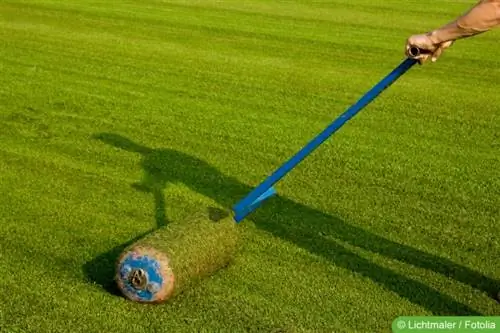
Instructions
- Mow the lawn.
- Water the area.
- Move the roller lengthways across the surface.
- Then roll in the cross direction.
Note:
Garden rollers can be purchased at hardware stores or rented on a daily basis. They are filled with water or sand.
Smooth the surface
Sometimes just small areas of the lawn are uneven. Then the entire lawn doesn't have to be replaced.
Instructions
- Mark the center of the unevenness in the lawn.
- Use the lawn edger to cut a cross in the lawn using the marking as the center point.
- Fold the four pieces of grass outwards without separating them from the lawn. Use a spade.
- Loose the soil with a hoe.
- Level the ground.
- Fold the four pieces of grass back inwards.
- Water the area so that everything can grow well again.
Renew lawn
If there are serious unevenness but you want a level lawn, you can renew the entire area. That's quite tiring.
Instructions
- Mow the lawn.
- Dig up the entire area.
- Let the area rest for a few days.
- Fill up top soil.
- Level the piled earth with a roller.
- Sow lawn seeds.
- Water and fertilize the area.
Verticutting
Strong scarifying often helps to smooth a lawn area.
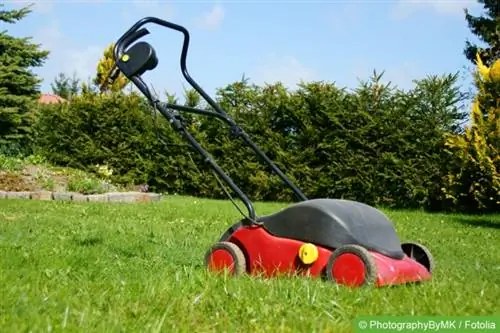
Instructions
- Mow the lawn.
- Scarify the area.
- Remove the sod from large bumps.
- Loose up the imperfections and level them with a roller or a running board.
- Sow new lawn seeds and water the area.
Note:
Do not enter the areas where new seeds have been sown in the following weeks. After about two weeks the young plants can be seen.
Frequently asked questions
How can you determine height differences on a lawn?
Place wooden posts at the corners of the area. Stretch cords between the posts and align them using a spirit level. Now hang a plumb line at the highest point and measure the distance to the ground. Repeat this measurement at the lowest point. Decide on a final height that is between the two measurements.
What causes unevenness in the lawn?
Mistakes when laying the lawn often lead to unevenness. If the area was not smoothed before sowing the grass seed, it will not produce a straight lawn. If the lawn is subjected to different loads, for example from children playing, unevenness can develop. It is not uncommon for voles or moles that dig underground tunnels to cause dents and holes in the lawn. The roots of nearby trees can also push up and change the lawn.
When is the best time to straighten the lawn?
If large unevenness needs to be leveled out, spring is best. We recommend the period from mid-April to the end of May. It is important that the ground is not frozen and not wet.
Smaller straightening can still be successful in summer. Remember that the lawn needs a lot of time to recover. All work should be completed by September at the latest so that the lawn is well strengthened.

